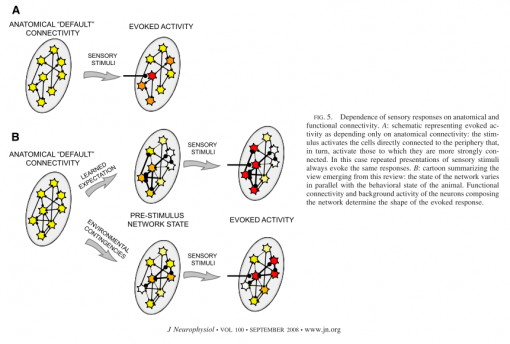Posted by Nodus Labs | April 7, 2012
Network States and Variability of Behavior
A very interesting paper by Fontanini & Katz (2008) published in Neurophysiology journal proposes a model that shows how similar sensory stimuli can elicit different responses in the same organism.
It’s a wide-spread view in neural science that brain is never inactive. Instead there’s spontaneous dynamic activity across the brain regions, the neurons are firing at various frequencies forming temporary “functional” patterns across the structural networks of the brain when they synchronize to one another.
Thus, when a sensory impulse arrives, it does not activate a certain neural pattern. Rather, the area which is responsible for the sensory input synchronizes with a certain part of that constantly changing functional network, leading to a specific cognitive action or behavioral response. Depending on the state of the person (or of the system), each moment of time a certain functional part of the network is activated, so the result of the coupling (synchronization) between the sensory input and the rest of the network will depend on the current pattern of activation. This pattern depends on the current state (awake, asleep, unresponsive, alert) and thus the same sensory input can lead to totally different responses, depending on the connectivity that is activated at the moment of time. Thus, specificity of behavior is a result of synchronization and a possible change in behavior may just mean de-activation of some part of the network and re-activation of some other part.
Click on the image below to see the diagram of this process.


